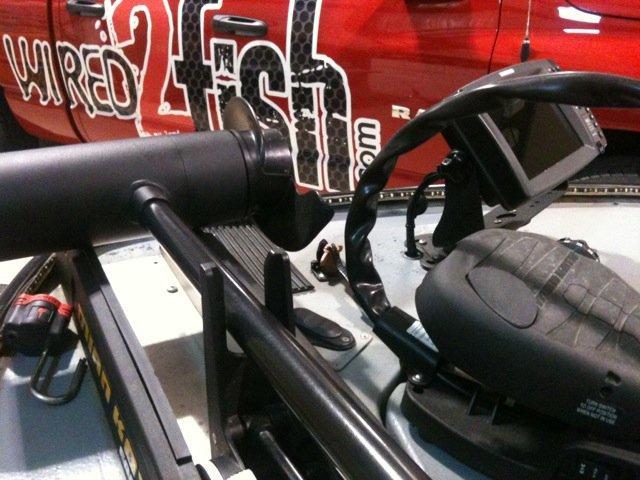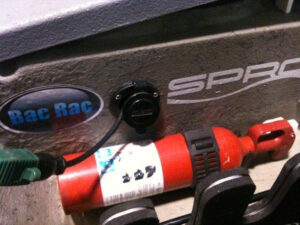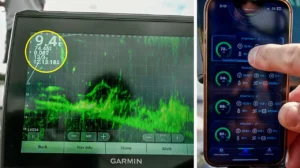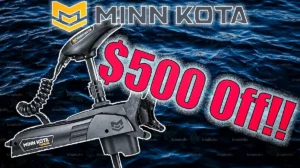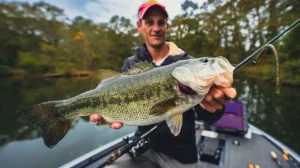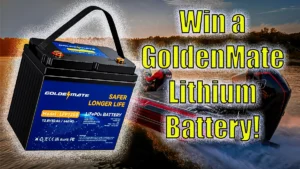We’ve discussed the truck and trailer plus we’ve talked about changing the lower unit lube. Getting the boat to the water is part one of the equation for the new fishing season. Part two is making sure the boat is ready and won’t have any failures. There are little things boaters can do that cost very little but if done properly can save big bucks and also a ton of frustration.
1. Batteries
Deep Cycle batteries are different buggers. They are not like car batteries. They are made to be charged and drained, charged and drained. They are also not all created equal. Better batteries can get pricey, but the peace of mind knowing they will function properly and last is critical to a great day on the water. Nothing is worse than getting to the water, in the middle of nowhere, and have a dead battery. Simple steps can keep that from happening and general maintenance of the battery will eliminate most issues.
It is very important to make sure that properly charged batteries have terminals covered and corrosion free. A drop or two of 3-in-1 one oil can keep most deposits from forming, and a small amount of oil and a brush can clean contacts. In most states, you must cover both the positive and negative posts, and it’s always best to use red for positive and black for negative. Battery boxes and trays should be secure and make sure straps or battery brackets are tight.
It is also important to keep batteries filled but not overfilled. You can use battery acid that you can get at most automotive stores or as a second option distilled water. NEVER use tap water in your batteries. It can shorten the battery life and may not provide a quality charge.
We run electronics and the outboard on the starting battery and only have the trolling motor on the 24-volt system. Its good to carry a set of jumper cables in the boat as well. Long cables are a must. Don’t scrimp on the cost as the better cables work better.
A battery hydrometer can be purchased for a few dollars at the automotive store. This simple device can tell you what shape your batteries are in by simply pulling battery water into the unit. More expensive load testers are also available and a good investment.
2. Trolling Motor
It is very important to keep your trolling motor in tip-top shape.
Remove the prop now and again, and check for line on the shaft of the motor. A few feet of discarded line can ruin bearings and be a costly repair if not removed. We also lubricate and protect the foot, spring and head of the trolling motor after each trip. We use Cover-All Protectant for the non-moving parts, and WD-40 for those that move and are outside the unit. The main spring on our Minn Kota is lubricated numerous times during the year. It not only allows it to function properly but keeps it from rusting. Also check the plug on the motor a few times a year and always after fishing in a heavy rain. A drop of two of light oil on the leads is all it takes to make sure you are getting the most power out of your unit.
When you are doing this its a great time to lubricate seat pedestals as well. This eliminates squeaks and also keeps them from rusting.
3. Fire Extinguisher and Battery Charger
A properly maintained fire extinguisher is a must in a boat. Most state laws require it but from a safety standpoint it gives the angler peace of mind. Most good units either have a meter or a test button on the unit to tell if its good or not. Its a good idea to check this before launching the boat each time you put into the water. Simple deal but could be well worth it should a fire occur.
We also check the battery charger now and again as well. Check to make sure you are getting a good connection on each battery and also that its not boiling the batteries. Good chargers have lights to show charge rate. Its good to have the compartment lid open during charging as units can get hot.
4. Steering cables
Lubricate steering cables if possible. Some take grease while others hold hydraulic oil and should be serviced by your dealer.
5. Electronics
Use a UV protectant on on your electronics several times per year. Do not spray directly on the unit but rather spray on a soft rag and gently wipe back, around screen and bracket. Use a reputable screen cleaning spray sparingly on your display screen like Ardent Screen Kleen or the Professors Screen Cleaner Protectant. We clean our graph after every trip and never use an abrasive or chemical cleaner with ammonia on our screens. Manufacturers have specifications for their respective screens.

6. Livewells and Sump
Spring is a great time to wipe and vacuum out livewells and the sump area of the boat. Get all loose particles from screens and from under bilge pumps and livewell pumps. Rinse sump area with a light soap and flush. Never use soap in the live well for obvious reasons and several companies have tank cleaners that will not harm fish yet get grime and residue removed. We like to shut off the livewells on our first trip of the year and season the livewell with U2, Rejuvenade or Please Release Me. A teaspoon of hydrogen peroxide is also good as a seasoning additive. Biologists recommend non-iodized salt as well. Fill livewells completely, recirculate and drain. This will keep your fish healthy on that first trip and also make sure all pumps and baffles are working effectively.
Rheostat and switch timers should be tested at this time as well to assure they work as designed.
7. Outboard
Service work is best performed in the fall to assure the outboard is properly protected for storage. Many dealers will winterize boats with a fogging oil. Its always good to start with a “fresh” tank of gas each year but using Stabil or Sea Foam in old gas will make sure moisture is eliminated. Its good to let your motor warm up on the first trip to make sure cylinders are properly lubricated and your engine is ready to put the hammer down. Again, check with your dealer if you have any motor issues.
Note: Engine may smoke a bit more than normal if fogging was performed.
8. Lights and Supplies
Plug in and test both the bow and stern lights on the boat. Its always good to carry a spare bulb for each in the boat. We use a small Hefty Ziplock Bag and a Plano 1449 Guide Box to store spares. Clean up corrosion and properly store your lights too. We also have a whistle, horn, wipes, fuses, spare plug, tape and connectors in that box, just in case. We also carry a marine tool kit, prop wrench, spare prop and a first aid kit in the boat.
The tow vehicle, trailer and boat are now ready. Lets go fishing!


